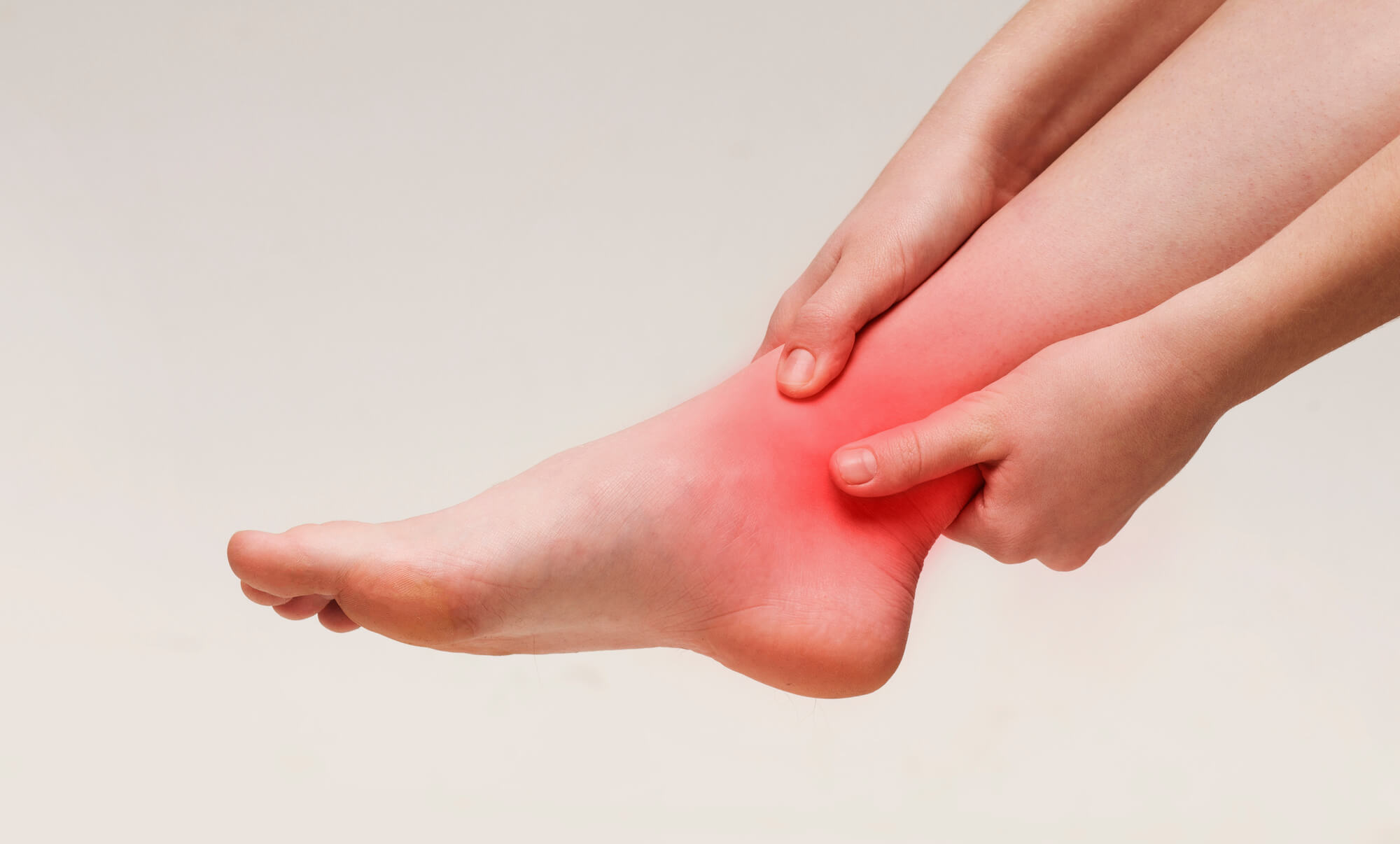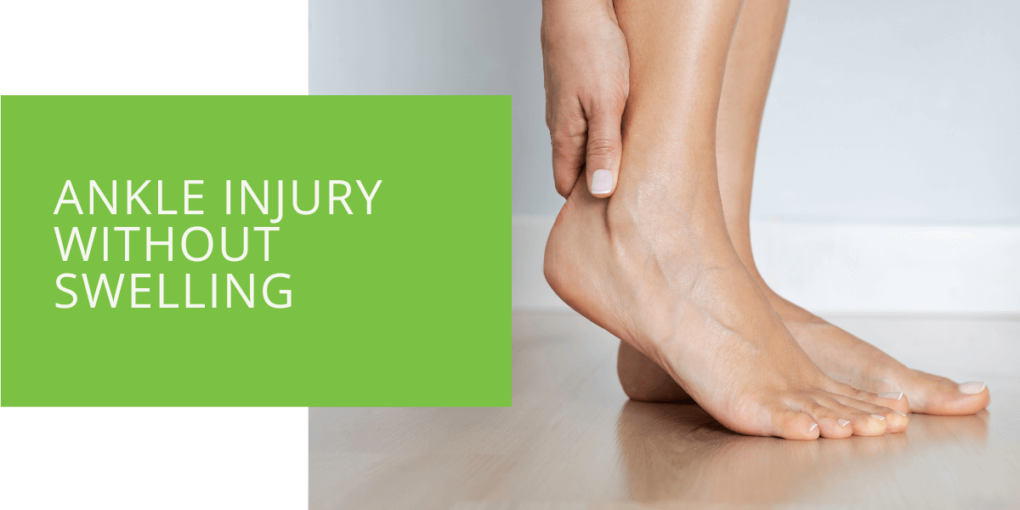Understanding an Ankle Injury without Swelling
An ankle injury can be common, especially among those who lead an active lifestyle or participate in sports. While swelling is often associated with ankle injuries, it's important to understand that not all injuries manifest visible swelling. This article will delve into the world of ankle injuries without swelling, exploring the causes, symptoms, diagnosis, and treatment options. Whether you're an athlete or have experienced ankle pain without visible swelling, this information will help you better understand and manage such injuries.
Causes of Ankle Injury without Swelling
- Overuse and Repetitive Strain Injuries: Ankle injuries without swelling can be caused by repetitive motions or overuse of the ankle joint. For extended periods, engaging in activities such as running, jumping, or even walking can lead to micro-injuries in the ligaments, tendons, and tissues surrounding the ankle. Gradually, these cumulative injuries can result in ankle pain without noticeable swelling.
- Ligament or Tendon Damage: Damage to the ligaments or tendons around the ankle, such as an ankle sprain or strain, can occur without significant swelling. These injuries may be caused by sudden twisting or rolling of the ankle during physical activities, leading to micro-tears in the ligaments or tendons.
- Stress Fractures: Stress fractures are tiny cracks in the bone that often occur due to repetitive stress or overuse. While stress fractures typically cause localized pain, they may not always result in visible swelling around the ankle area.
- Nerve Impingement: In some cases, nerve impingement or compression around the ankle can cause pain without swelling. Conditions like tarsal tunnel syndrome, where the posterior tibial nerve is compressed, can result in ankle discomfort without visible signs of inflammation.
- Medical Conditions Affecting the Ankle: Certain medical conditions, such as arthritis or gout, can cause ankle pain without significant swelling. These conditions may lead to inflammation within the joint, resulting in discomfort and limited mobility.

Symptoms of Ankle Injury without Swelling
Identifying an ankle injury without swelling can be challenging, as the absence of visible signs can mask the severity of the condition. However, some common symptoms may indicate an underlying issue:
- Persistent ankle pain during or after physical activity
- Difficulty bearing weight on the affected ankle
- Limited range of motion and stiffness
- Tenderness or discomfort without noticeable swelling
- Gradual onset of symptoms, worsening over time
Diagnosing Ankle Injury without Swelling
If you experience persistent ankle pain without swelling, seeking professional medical advice is crucial. A podiatrist or orthopedic specialist can perform a thorough examination and utilize various diagnostic tools, including:
- Physical Examination: The podiatrist will assess your ankle, checking for signs of tenderness, instability, or limited range of motion. They may also inquire about your medical history and the injury's circumstances.
- Medical History Assessment: Providing a detailed medical history, including previous ankle injuries or existing medical conditions, can assist in diagnosing the underlying cause of ankle pain.
- Imaging Tests: X-rays, magnetic resonance imaging (MRI), or ultrasound may be used to evaluate the structures of the ankle and rule out any fractures, ligament tears, or tendon damage.
- Specialized Tests: In cases of suspected nerve impingement, nerve conduction studies or electromyography (EMG) tests may be performed to assess nerve function and identify potential entrapment.

Treatment Options for Ankle Injury without Swelling
The treatment plan for ankle injuries without swelling depends on the underlying cause and the severity of the condition.
- Rest, Ice, Compression, and Elevation (RICE) Method: RICE is often the initial approach for managing ankle injuries without swelling. Resting the injured ankle allows the tissues to heal while applying ice helps reduce pain and inflammation. Compression with an elastic bandage provides support and minimizes swelling, and elevating the ankle above heart level aids in reducing fluid accumulation.
- Physical Therapy: Engaging in physical therapy exercises plays a vital role in recovering from ankle injuries. A skilled physical therapist will design a program tailored to your specific needs, focusing on strengthening the muscles around the ankle, improving flexibility, and enhancing balance and stability. These exercises promote healing, prevent further injuries, and restore normal function.
- Custom Orthotics or Braces: Custom orthotics or braces may be recommended to provide additional support and stability to the ankle joint. These devices help alleviate stress on the injured area and reduce pain during activities. Orthotics can also correct any underlying biomechanical issues contributing to ankle injuries.
- Nonsteroidal Anti-inflammatory Drugs (NSAIDs): Over-the-counter nonsteroidal anti-inflammatory drugs, such as ibuprofen, may manage pain and reduce inflammation associated with ankle injuries. However, it's important to consult a healthcare professional before taking any medication to ensure it suits you and doesn't interfere with existing conditions or medications.
- Corticosteroid Injections: In some cases, corticosteroid injections may be administered to reduce inflammation and relieve pain in the ankle. These injections are typically delivered directly into the affected area under the guidance of a healthcare professional.
- Extracorporeal Shockwave Therapy (ESWT): ESWT is a non-invasive treatment option that utilizes shockwaves to stimulate the healing process in damaged tissues. This therapy has shown promising results in promoting tissue repair and reducing pain in musculoskeletal conditions, including ankle injuries.
- Surgical Intervention: While conservative treatments can effectively manage most ankle injuries without swelling, severe cases may require surgical intervention. Surgical procedures aim to repair damaged ligaments and tendons or remove impinging structures contributing to pain and discomfort.

Prevention and Rehabilitation
Preventing ankle injuries without swelling and promoting successful rehabilitation is essential for long-term ankle health. Consider the following measures:
- Prioritize proper warm-up and cool-down routines before and after physical activity. This helps prepare the muscles, tendons, and ligaments for exercise demands and promotes circulation.
- Incorporate ankle-strengthening exercises into your fitness routine. These exercises can target the calf muscles, Achilles tendon, and ankle stabilizers, reducing the risk of future injuries.
- Wear appropriate footwear that provides adequate support and cushioning for the ankle. Consider consulting with a podiatrist to determine the best footwear for your needs.
- Avoid overuse and excessive stress on the ankle. Gradually increase the intensity and duration of physical activities to allow the body to adapt and avoid placing excessive strain on the ankle joint.
- Follow a gradual return-to-activity plan after an ankle injury. Working with a physical therapist can ensure a safe and effective progression back to regular activities.
Conclusion
Understanding ankle injuries without swelling is crucial for accurate diagnosis, timely treatment, and effective management. By recognizing the causes, symptoms, and available treatment options, individuals can take proactive steps to prevent these injuries or seek appropriate medical care. Whether you're an athlete or experiencing ankle pain without visible swelling, consulting with a podiatrist or orthopedic specialist can provide the guidance and expertise necessary to regain ankle health and maintain an active lifestyle. Early intervention and proper care are key to a successful recovery and long-term ankle well-being.

